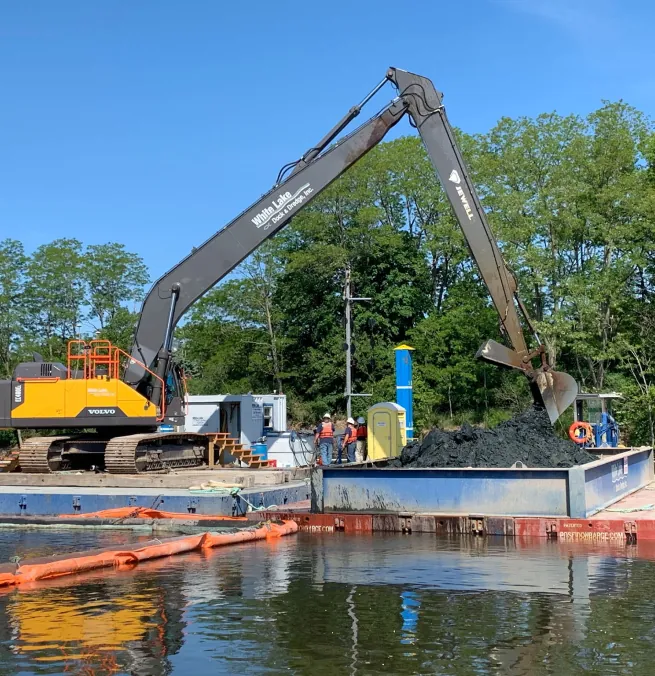Environmental dredging, capping, & marine construction capabilities
Dredging, capping, and marine construction are ways ENTACT works on the water to improve and maintain waterways, shorelines, wetlands, and remediate sediments. From cleaning up contaminated waterways, to restoring vital wetlands, ENTACT can self-perform a wide variety of work for both public and private sector clients. We have the mobile equipment and experience to work on any body of water, anywhere in the nation.
At ENTACT, we know our waterways are precious resources that influence all aspects of our daily lives – from recreational enjoyment to the overall economic strength of local communities. Just like we do on land, we take every precaution when working on and/or in the water to ensure our methods are environmentally friendly and contribute to the betterment of our waters. We take great pride in the work we’ve done to restore contaminated waterways, wetlands, and shorelines; returning habitats to their natural state to bolster local economic development and enhance the ability of local wildlife and ecosystems to flourish.
Explore more about White Lake Dock & Dredge, an ENTACT division, known industry-wide for expert environmental dredging and marine construction.
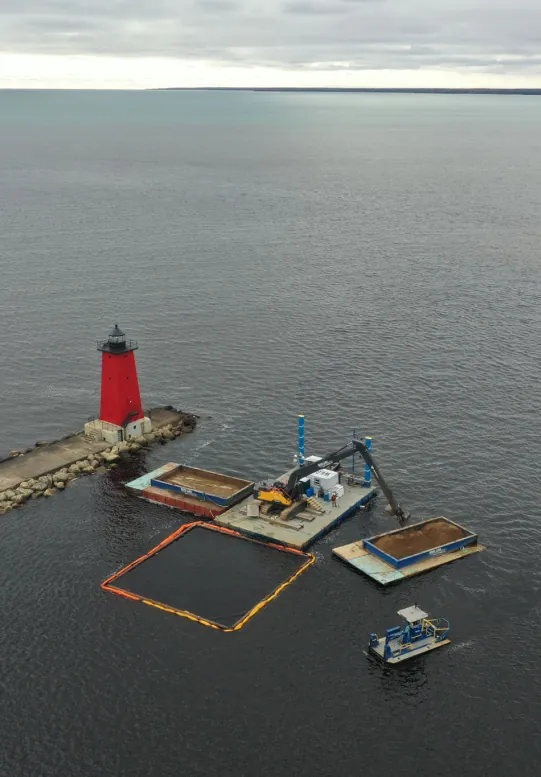
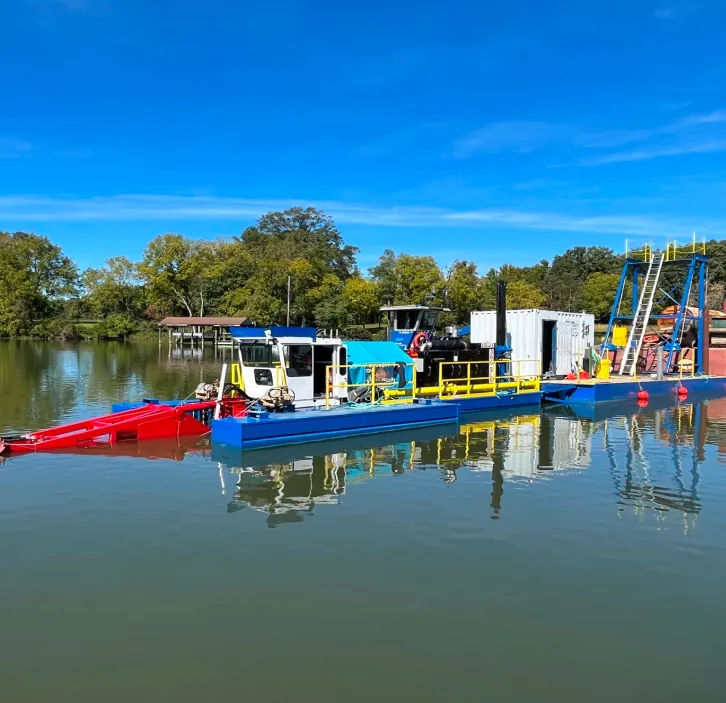
Dredging & marine services
ENTACT’s team of in-house specialists self-performs a wide range of dredging and marine services. Our Clients count on our ability to adapt quickly to changing project requirements and ensure seamless coordination between the different phases of a marine project. Our dredging and marine services include:
- Mechanical & Hydraulic Dredging
- Subaqueous Sediment Capping & Covers
- Liquids/Solids Separation, Dewatering, & Water Treatment
- Subaqueous In-Situ Stabilization and Solidification (ISS)
- Hydrographic Surveying
- Habitat & Wetlands Restoration
- Sediment Processing & Management
- Marine Construction
- Isolation Barriers
- Shoreline Stabilization & Bank Stabilization
- Marine Sediment Sampling Support
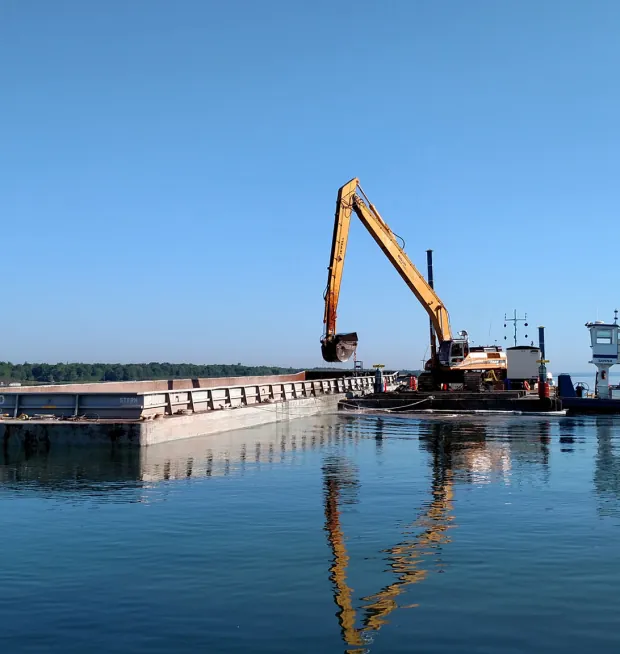
Environmental dredging
Dredging is an essential service used in residential, commercial, environmental, and industrial applications. The two most common types of dredging ENTACT performs are mechanical and hydraulic.
For mechanical dredging, we operate large cranes or excavators on a barge and use the equipment to physically remove material and place it into material barges for transport to shoreside sediment management areas. For hydraulic dredging, we use a large cutter suction, rotary cutter head, or auger style head attached to a pump. The pump slurries sediment and water, suctions in the slurry, and pumps it miles away to a processing or disposal area. The project scope, location, and other factors determine which dredge we will use.
Dredging is performed for a multitude of reasons, including removing contaminated sediments, environmental remediation projects, maintenance to keep waterways and ports deep enough for safe passage, controlling streams or shorelines to prevent flooding, and coastal redevelopment. No matter the reason, ENTACT is equipped to self-perform dredging in any capacity and in any body of water.
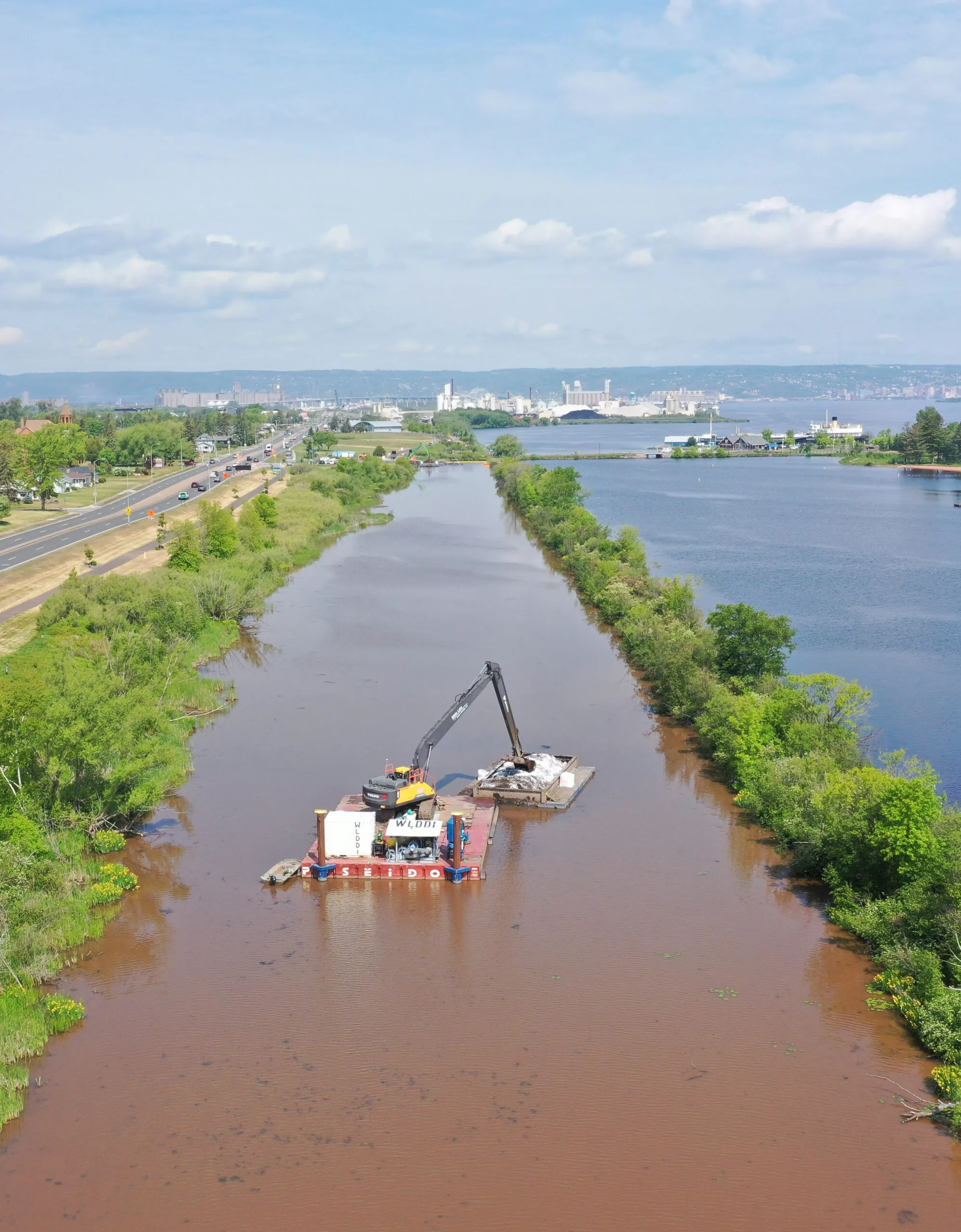
Sediment management
Our environmental dredging, capping, and marine construction projects often involve the careful management of subaqueous and water-adjacent sediments. Over the years, our teams have performed more than 200 sediment remediation projects, managing 3,500,000 cubic yards of dredge sediments and 5,500,000 cubic yards of total sediments.
ENTACT teams have also performed nearly 20 engineered/multi-layer capping projects with 200+ acres of subaqueous capping. Sediments are managed in a variety of ways depending on their condition, the location of the project, and the ultimate disposal location of the sediment.
To address the management of contaminated sediments, we have several techniques that are frequently used including:
- Gravity draining of contaminated sediments in lined dewatering cells before addition of solidification agents like Portland Cement, lime kiln dust, and more
- In-barge polymer solidification, involving the application of non-toxic Super Absorbent Polymers that allow direct handling and disposal without drying time
- Hydraulic dredging to confined disposal facilities or dewatering cells for storage and dewatering
- Hydraulic dredging, chemical conditioning, and dewatering sediments in geotextile tubes before eventual transportation and disposal
- Isolation of contaminated sediments, dewatering the target area, solidification of sediments in place, and then removal of the contaminated sediments
Other means of sediment management include, but are not limited to:
- Reusing sediments as a base layer for engineered capping
- Reusing sediments to reslope banks or solidified sediments as structural fill for development driven projects
- Piping dredged sand and organic material to replenish beaches and riverfronts
- Using in farming applications after passing regulatory testing
Frequently asked questions
Contaminated sediments are often a result of legacy industrial processes. The type and level of contamination varies widely but often includes constituents of concern such as: PCBs, heavy metals, SVOCs, VOCs, and many more. The goal of the removal is the protection of local communities and the local fish and wildlife populations.
The reasons for dredging are varied. However, contaminated sediments often pose a bio- accumulation risk to the local community. Benthic habitat is often contaminated which bio- accumulates in the fish and other organisms that humans eventually eat or interact with. Furthermore, it has been proven that investments in restoring impacted waterways leads to significant economic development for local communities through the increase usage (both commercially and recreationally) of waterways.
In areas prone to flooding, dredging can help when performed correctly. For example, storms can push sand into rivers, forming a dam that restricts flow, causing backups and subsequent flooding upstream. This is an even larger concern for smaller creeks and waterways as these can get dammed off and start rising quickly. Dredging can remove these sediments and deposit them in a safe area to not contribute to flooding elsewhere.
Sediment capping uses layers of materials to contain contaminants within underlying sediments and isolate contaminants from clean environments. Engineered sediment capping requires an added level of design and engineering, often using multiple layers of different materials to cover and cap the sediment or contaminant.
Marine construction is a broad term. Often, this term is used to encompass or explain all that we do— building rock revetments, marine structures, and even dredging and capping. Some examples of traditional marine structures include:
- Marinas
- Piers
- Docks
- Bulkheads
- Sheet pile installation
- Boardwalks
- Jetties
- Pile Driving
